The Perfectly Preserved World War I Trench
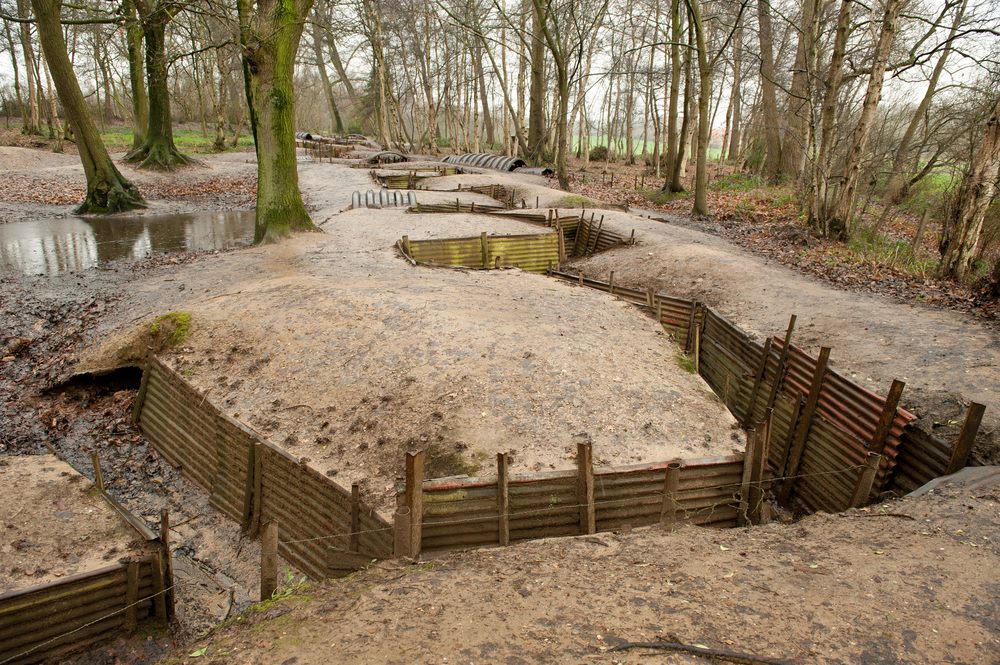 Sanctuary Wood, Ypres, Belgium, where trenches have been preserved since World War One. (Photo: John Gomez/shutterstock.com)
Sanctuary Wood, Ypres, Belgium, where trenches have been preserved since World War One. (Photo: John Gomez/shutterstock.com)
The fields of Northern France and Belgium still bear many of the scars of last century’s Great War, but they are a faint reminder of battle carnage on the Western Front. After the Armistice, farmers returned to find their fields and villages totally destroyed by four years of trench warfare. Craters mark spots where artillery shells exploded but much of the area is now covered over with grass, hedgerows and forests.
Except for one place.
In 1919, a Belgian farmer called Schier returned to his land on a hill over looking the ancient medieval city of Ypres, and simply left it as it was. Once part of the British front line, it lies there today looking much as it did a hundred years ago: a mess of rusted barbed wire, shell holes full of water, trees shattered by artillery fire and a system of trenches and tunnels filled with mud.
Still privately owned by the Schier family, it is one of the few sites in Flanders where you can experience something of the actual terrain suffered by soldiers during World War I. On British military maps, it was noted as Hill 62, for its elevation in feet above sea level. For the tens of thousands who lived and died here it was known as Sanctuary Wood. To go there now is to experience the horrors of life in the trenches for yourself.
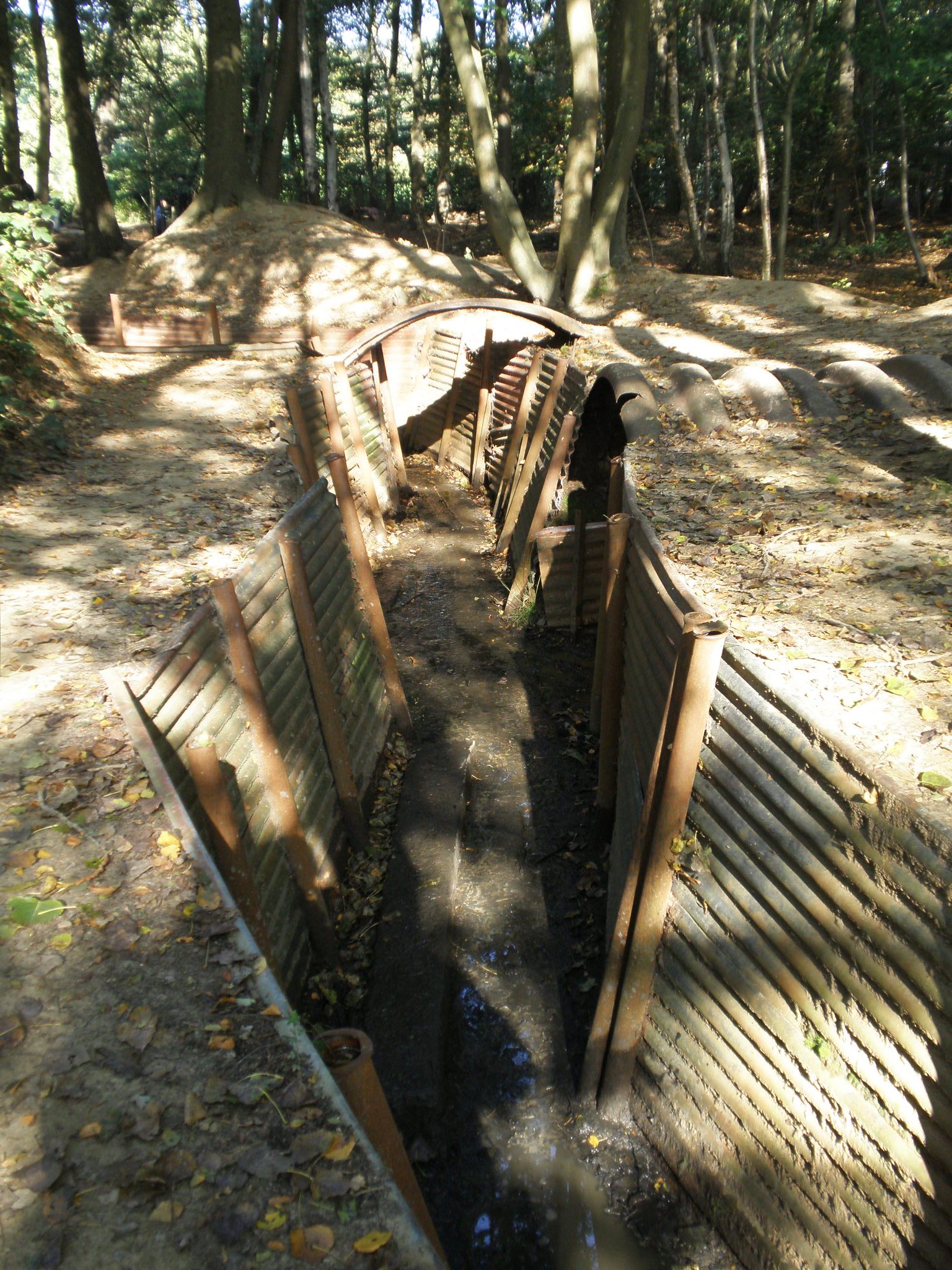 Looking into the trenches. (Photo: Amanda Slater/flickr)
Looking into the trenches. (Photo: Amanda Slater/flickr)
The old medieval cloth manufacturing city of Ypres in Belgium looms large in the British psyche due to the amount of casualties suffered here. In the early stages of the war, Germany raced to the sea in an attempt to defeat France by attacking through Belgium. This strategy, known as the Schlieffen plan, drawn up years before the war started, would avoid the heavy French fortifications further south and seize Paris in a sweeping attack from the side. British made their stand to block Germany at Ypres. In a salient (a bit of battlefield in enemy territory) jutting out from the city both sides dug in trenches and for four years inflicted some of the bloodiest fighting of the Great War upon each other, in the now familiar pattern of minimal gains for massive casualties.
The road leading to the British front lines from Ypres is today marked by one of the most somber of all war memorials, the Menin Gate. A colossal archway on a scale of the main concourse at Grand Central Station in New York, it is covered in the names of nearly 60,000 soldiers of the British Empire who died here. Standing underneath it, the names stretching beyond what the eye can see, it is unfailingly moving. However, these are just the names of those who died with no known grave. They were simply swallowed up and disappeared in the fields surrounding Ypres. Every night at 8 p.m. a memorial service is held for the missing. No wonder British writer Siegfried Sassoon wrote of the memorial—“Here was the world’s worst wound.”
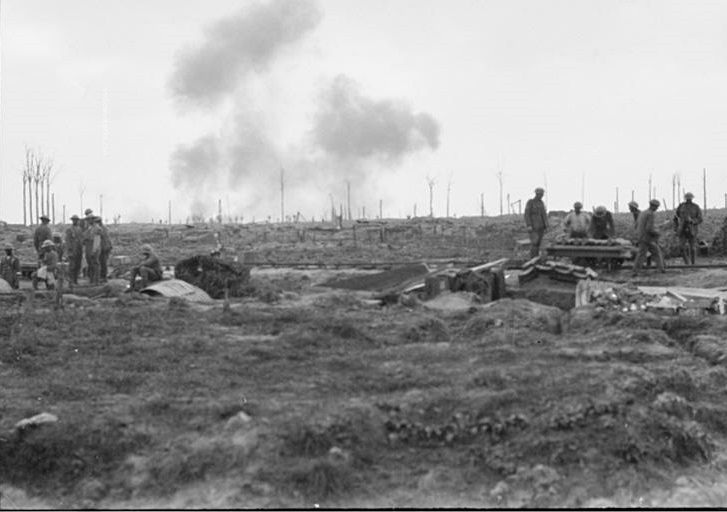
A view of Sanctuary Wood in September 1917. (Photo: Courtesy WW1 Cemeteries)
The identifiable dead are buried in countless cemeteries located in the Ypres Salient. Almost every copse and country lane features a meticulously tended graveyard, maintained by the Commonwealth Graves Commission. The largest, Tyne Cot, located on a ridge east of Ypres holds nearly 12,000 burials; Sanctuary Wood, a few miles to the south, has just over 600. Each head stone is immaculate, with the grass as neatly trimmed as a vicarage lawn, with memorial books present to help visiting relatives find a particular tombstone amongst the hundreds of thousands.
But while the government-funded commission diligently tend their memorials, the privately-owned Sanctuary Wood is something of an anomaly. Entering the farm house through a cafe, the building was turned into a museum in 1919, and is filled with the rusted artifacts Shier found on his property. Rifles encrusted with mud, German steel helmets riddled with bullet holes, and a collection of period stereoscope photographs of the battlefield. Walking through the farmhouse into the back garden, past rolls of barbed wire and an alarming stockpile of German artillery shells, a wooden sign post indicates the way to the “British Front Line.”
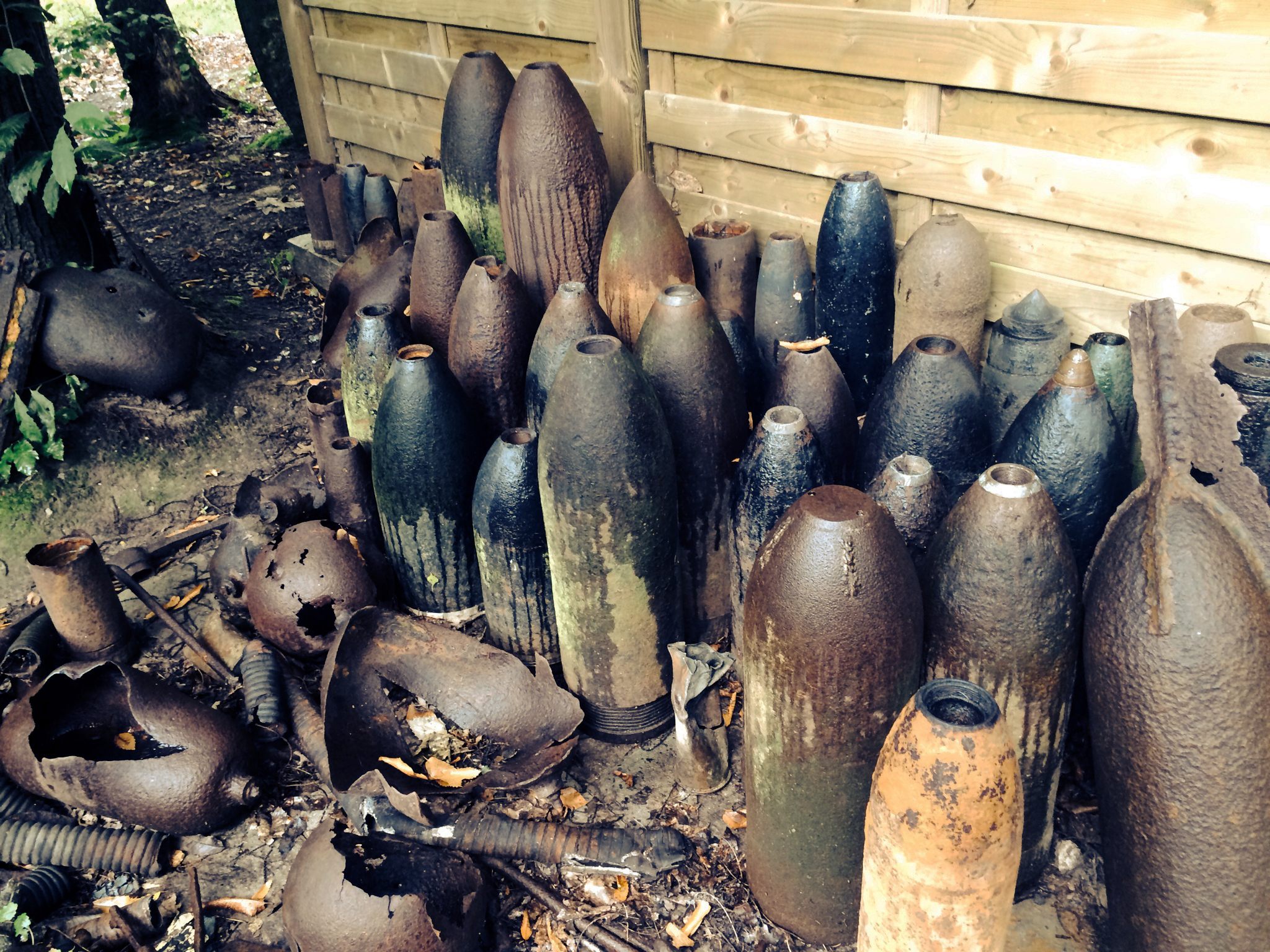
Rusting war toys. (Photo: Luke Spencer)
Climbing down into the ruins of the trenches, it is perhaps the only place left to physically understand the daily horrors of life on the Western Front. The flat lowlands of Flanders were particularly susceptible to flooding. The summer of 1917 saw some of the heaviest rainfalls recorded, and the Salient turned into a lethal quagmire of glutinous mud, constantly churned up by incessant shellfire. I visited Sanctuary Wood in the height of a dry summer and still the trenches were swamped with mud and rain. A hundred years later the wood still looked desolate, a nightmarish lunar landscape of craters, shattered tree stumps and barbed wire.
Working at London’s Imperial War Museum, historians Nigel Steel and Peter Hart started in the 1980s to collect firsthand accounts from those who lived and fought at Ypres.
“It was a nightmare,” wrote Private William Collins of the Royal Army Medial Corps, “all you had was a couple of duckboards.....and either side of it was about ten feet of mud. If you fell off it would take a traction engine to pull you out.”
 Tunnels within the trenches. (Photo: Amanda Slater/flickr)
Tunnels within the trenches. (Photo: Amanda Slater/flickr)
Sanctuary Wood was given its peaceful sounding name in the early days of the war, when the heavy woodland provided perfect cover for respite from German guns, and a place to treat the wounded. Within months though, the constant artillery bombardments turned the wood into a devastated nightmarish landscape. “Ironic to be called by such a peaceful name! - Can a wood be so called when that entire region is....desolate with huge holes, naked and burned, and reduced to shreds,” wrote Phillipe Bieler, a Canadian soldier who recorded his experiences of the front in his memoir Onward Dear Boys.
Others had similar experiences. Private Alfred Warsop of the 1st Battalion Sherwood Foresters, wrote:
“I was sitting in a trench, soaked to the skin. I had to change position as the side of the trench was slowly sinking being only made of wet mud… The conditions were abysmal enough without the ever present dangers of shellfire, trench raiding parties, poison gas attacks and raking machine guns....There was a flash in the sky. I realized with a shock that I had been badly hit. My right arm jumped up on its own and flopped down. It felt as if my left arm and part of my chest had been blown clear away.”
The preserved trenches at Sanctuary Wood, however, have been controversial. As a privately owned property, the old British front line isn’t protected by the watchful eye of the Commonwealth Grave Commission. All over Northern France and Belgium, farmers and construction workers still regularly find remnants of the Great War, everything from unexploded artillery shells to rusted live hand grenades. The so-called Iron Harvest in 2013 alone unearthed over 160 tons of deadly artifacts. In fact there were so many recovered shells that the Belgian government created a daily pick up service where farmers could leave their deadly discoveries by the side of the road to be picked up, and safely delivered to a specialist bomb disposal service in Poelkapelle. Since the end of the war, over 260 people have been killed by disturbing unexploded bombs around Ypres alone, most recently in 2014 when two construction workers accidentally detonated a 100-year-old shell.
 A 1917 aerial view shows the ruins of the Belgian town of Ypres, which was situated near to Sanctuary Wood. Ypres was at the centre of some of the most intense battles of World War One. (Photo: Public Domain/WikiCommons)
A 1917 aerial view shows the ruins of the Belgian town of Ypres, which was situated near to Sanctuary Wood. Ypres was at the centre of some of the most intense battles of World War One. (Photo: Public Domain/WikiCommons)
It’s also commonplace for farmers and construction workers to unearth more gruesome finds. One such was on an industrial site in the village of Boezinge, just outside Ypres, where work was being done on the Ypres-Izer canal. Here in 1992 a section of the British front line was discovered, along with the remains of 155 soldiers. When such a discovery is made the Commonwealth Graves Commission is called in to see if the remains can be identified. A team of archaeologists known as “The Diggers” then go to work to unearth and preserve the site. The continual discovery of remnants from the war are treated with archaeological respect for the site and for those who died there.
Apart from official stewardship, then, Sanctuary Woods’ caretakers have turned what is essentially a memorial site into a living museum. At some point, the Shier family re-enforced the trench walls with now rusting corrugated iron to stop them collapsing. Looking at primary sources, the majority of trenches would have been revetted with wooden planks and lined with sandbags. But this kind of work highlights the argument about the historic site’s care: Is the family desecrating a battlefield or preserving it? As one World War I battlefield touring guide puts it, “The natural desire to be allowed to walk freely amongst historical remains such as these trenches is one side of the argument, the possibility that they will be damaged in so doing is another.”
 Part of the interior of the Menin Gate, Ypres, where every night at 8 p.m. a memorial service is held. (Photo: Public Domain/WikiCommons)
Part of the interior of the Menin Gate, Ypres, where every night at 8 p.m. a memorial service is held. (Photo: Public Domain/WikiCommons)
But what Sanctuary Wood does is to enable the visitor with a visceral first-person experience of what it was like to descend into the earth, to slog through mud-filled trenches and avoid being ensnared on rusted barbed wire. In the early 1980s part of Sanctuary Wood collapsed to reveal an undiscovered system of tunnels. Built by the Royal Engineers, it is possible today to walk inside. Such is the rudimentary nature of the living museum that there are no flashlights provided: You enter at your own risk. By the pale light of my phone, I entered the narrow claustrophobic tunnels. Only 4 feet high, and filled with mud, water in some places, rising to uneven dry earth floors, the feeling of finding your way deep underground is claustrophobic in the extreme. These tunnels would have provided protective communication passages between the trenches. For the miners tunneling towards the Germans, dozens of feet below, the suffocating terror must have been imaginable.
For war poet Wilfried Owen the demoralizing effects of trench life under fire left men;
“Bent double, like old beggars under sacks,
Knock-kneed, coughing like hags, we cursed through sludge.”
While the officially sanctioned Menin Gate and countless surrounding cemeteries and war memorials poignantly speak to the vast loss of life at Ypres, visiting the preserved ruins of the old British front line at Sanctuary Wood is to descend first hand into the wretched misery of trench life on the Western Front. Where soldiers rapidly became, as Siegfried Sassoon described in his 1917 poem Dreamers, “citizens of death’s grey land.”
“I see them in foul dug-outs, gnawed by rats,
And in the ruined trenches, lashed with rain.
Dreaming of things they did with balls and bats.
And mocked by hopeless longing to regain
Bank-holidays, and picture shows, and spats,
And going to the office in the train.”
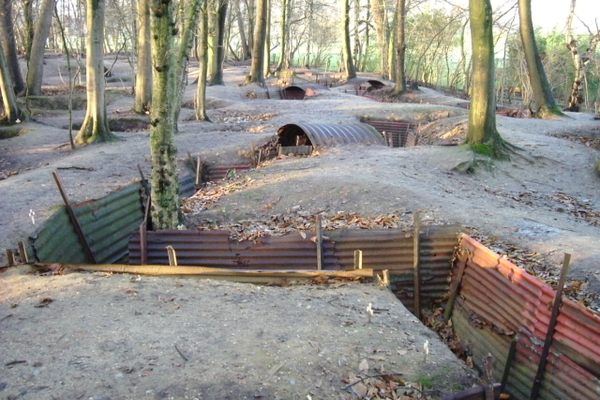




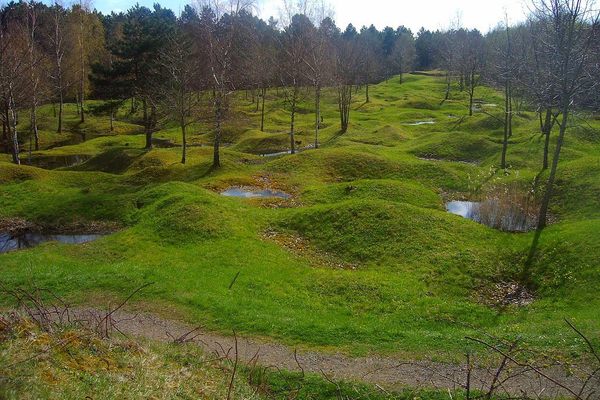
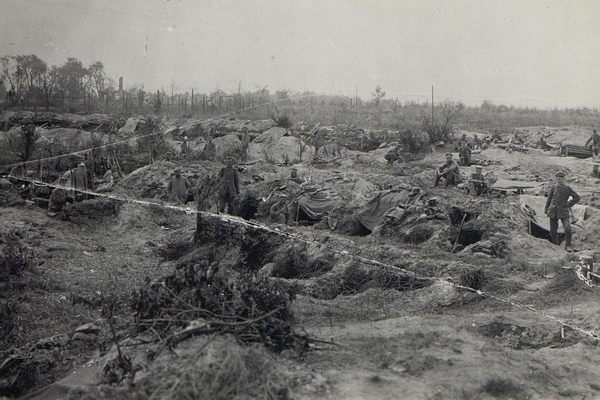


Follow us on Twitter to get the latest on the world's hidden wonders.
Like us on Facebook to get the latest on the world's hidden wonders.
Follow us on Twitter Like us on Facebook